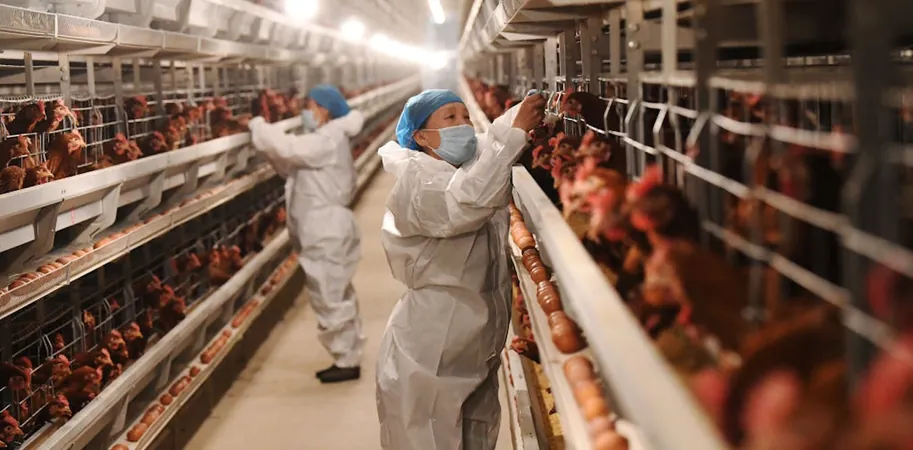
Alarming Signs: Bird Flu May Be Teetering on the Edge of Human Transmission – Here's How We Can Combat It!
2025-03-31
Author: Liam
As we navigate an era filled with emerging health threats, one pressing concern looms larger than life: the potential for avian influenza, particularly the notorious H5N1 strain, to transcend its avian hosts and jump to humans. While predictions surrounding disease outbreaks are never foolproof, insights reveal a scary reality where this particular virus is inching closer to becoming a significant threat to global health.
H5N1 has become a focal point for scientists and public health officials alike, with a staggering 900 confirmed human cases since 2003—an eye-watering mortality rate of nearly 50%. For perspective, this rate is about 20 times deadlier than the infamous 1918 flu pandemic. Such statistics underscore the dire urgency for monitoring and preventing any potential uptick in human cases that could lead to a catastrophic pandemic.
The Evolution of H5N1: An Intricate Dance of Spillover
Understanding how H5N1 might threaten human populations requires a deep dive into the mechanisms of viral spillover. This process involves pathogens evolving to infect new species. The virus must essentially find the right "keys" to unlock the "locks" of human cells, which can vary significantly across species. As it attempts this transition, many genetic mutations are needed, presenting a low chance of success. Unfortunately, this evolution often results in viral "chatter," where sporadic human cases arise, mostly among individuals with close animal exposure.
Currently, H5N1 human cases are limited to specific demographics, such as poultry and dairy workers directly interacting with infected animals. However, sporadic cases can serve as ominous precursors to wider human transmission, heightening fears of a potential pandemic.
The Road Ahead: Combating H5N1's Evolutionary Path
Despite these unsettling developments, there are proactive measures we can adopt to slow the virus’s evolution. Key strategies involve improving livestock management—after all, modern poultry farming practices and international trade routes often correlate more closely with outbreaks than the natural migration patterns of wild birds.
Moreover, the personal health decisions we make hold substantial power. Vaccination against seasonal influenza is a critical preventive measure. While it may seem disconnected from avian influenza, widespread vaccination minimizes the likelihood of seasonal strains mixing with H5N1, staving off variants capable of human-to-human transmission.
On a broader scale, global cooperation is vital. Improving nutrition and sanitation in developing regions can significantly boost overall immunity to infections and reduce exposure to new pathogens. An interconnected world means that no region operates in isolation when it comes to disease spread; thus, tackling these issues cooperatively is essential.
In summary, for over 10,000 years, human behaviors and choices have influenced the trajectory of infectious diseases. By taking informed and decisive actions today, we can alter the course of H5N1 and safeguard our future against potential pandemics. It’s time to act before it’s too late: will you be part of the solution?









 Brasil (PT)
Brasil (PT)
 Canada (EN)
Canada (EN)
 Chile (ES)
Chile (ES)
 Česko (CS)
Česko (CS)
 대한민국 (KO)
대한민국 (KO)
 España (ES)
España (ES)
 France (FR)
France (FR)
 Hong Kong (EN)
Hong Kong (EN)
 Italia (IT)
Italia (IT)
 日本 (JA)
日本 (JA)
 Magyarország (HU)
Magyarország (HU)
 Norge (NO)
Norge (NO)
 Polska (PL)
Polska (PL)
 Schweiz (DE)
Schweiz (DE)
 Singapore (EN)
Singapore (EN)
 Sverige (SV)
Sverige (SV)
 Suomi (FI)
Suomi (FI)
 Türkiye (TR)
Türkiye (TR)
 الإمارات العربية المتحدة (AR)
الإمارات العربية المتحدة (AR)